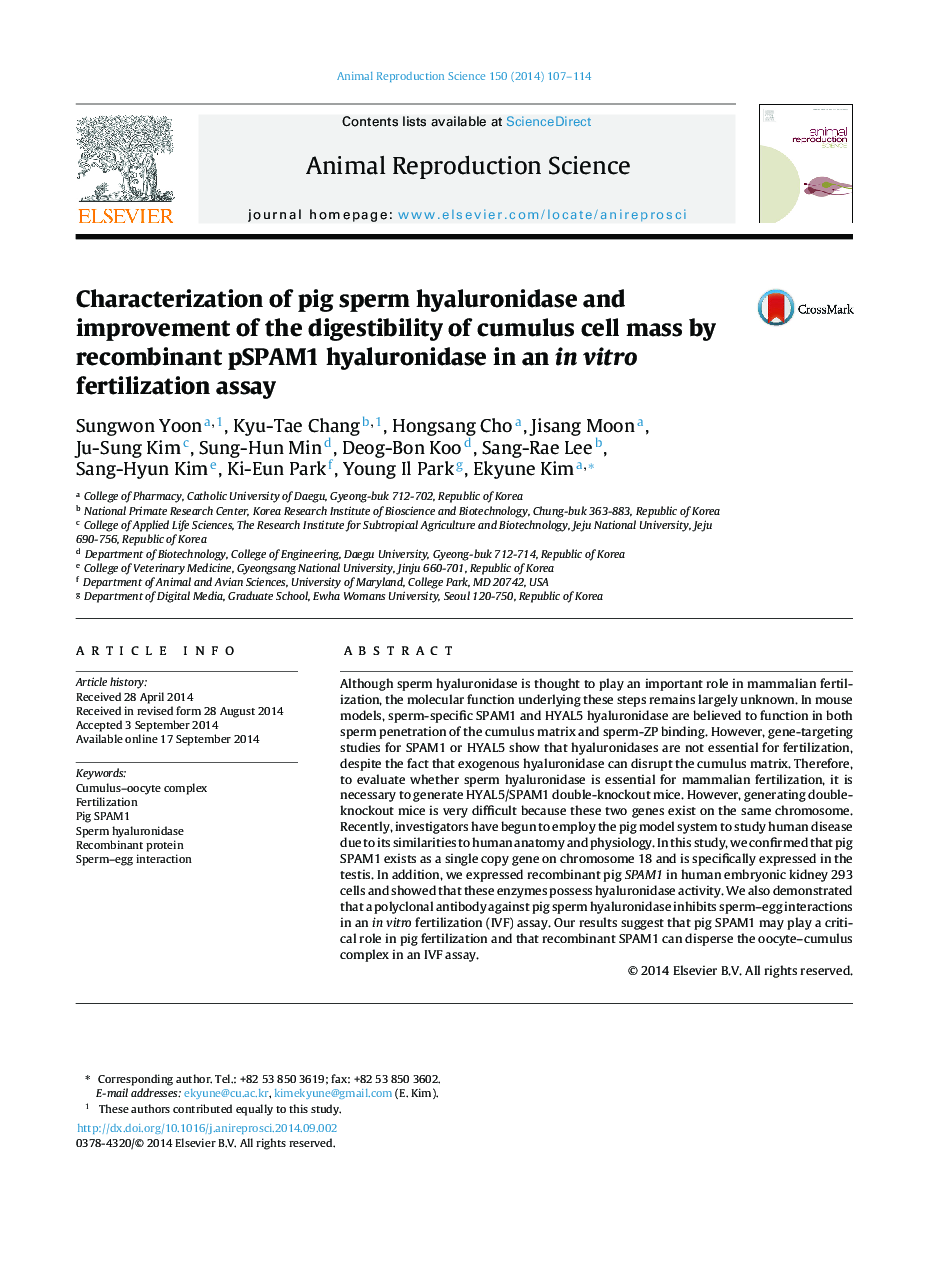| کد مقاله | کد نشریه | سال انتشار | مقاله انگلیسی | نسخه تمام متن |
|---|---|---|---|---|
| 2072690 | 1544728 | 2014 | 8 صفحه PDF | دانلود رایگان |

• Unlike mice, pig SPAM1 exists as a single copy gene on chromosome 18.
• Pig SPAM1 is specifically expressed in the testis.
• pSPAM1 polyclonal antibody inhibits sperm–egg interactions in an IVF assay.
• Similar fertilization rate were observed between pig SPAM1 and bull hyaluronidase.
• The cleaved and blastocyst developmental rate were not differed between two groups.
Although sperm hyaluronidase is thought to play an important role in mammalian fertilization, the molecular function underlying these steps remains largely unknown. In mouse models, sperm-specific SPAM1 and HYAL5 hyaluronidase are believed to function in both sperm penetration of the cumulus matrix and sperm-ZP binding. However, gene-targeting studies for SPAM1 or HYAL5 show that hyaluronidases are not essential for fertilization, despite the fact that exogenous hyaluronidase can disrupt the cumulus matrix. Therefore, to evaluate whether sperm hyaluronidase is essential for mammalian fertilization, it is necessary to generate HYAL5/SPAM1 double-knockout mice. However, generating double-knockout mice is very difficult because these two genes exist on the same chromosome. Recently, investigators have begun to employ the pig model system to study human disease due to its similarities to human anatomy and physiology. In this study, we confirmed that pig SPAM1 exists as a single copy gene on chromosome 18 and is specifically expressed in the testis. In addition, we expressed recombinant pig SPAM1 in human embryonic kidney 293 cells and showed that these enzymes possess hyaluronidase activity. We also demonstrated that a polyclonal antibody against pig sperm hyaluronidase inhibits sperm–egg interactions in an in vitro fertilization (IVF) assay. Our results suggest that pig SPAM1 may play a critical role in pig fertilization and that recombinant SPAM1 can disperse the oocyte–cumulus complex in an IVF assay.
Journal: Animal Reproduction Science - Volume 150, Issues 3–4, 30 November 2014, Pages 107–114